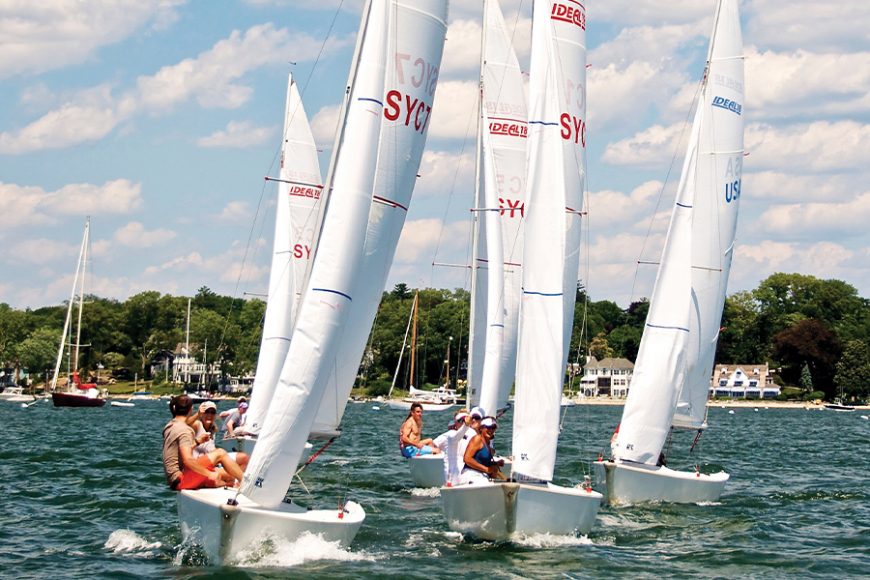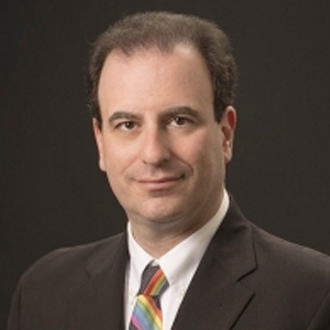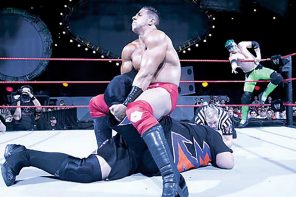When the Stamford Yacht Club opened 128 years ago, its well-heeled membership was not eager to get their heels dirtied by the lack of paved access in the city’s Shippan section.
The solution?
“They had to build a wooden boardwalk to get them down from the horse trolley on Shippan Avenue to walk down to the club,” says Christopher J. Hynes, a Stamford attorney who is the club’s historian as well as a former commodore.
Today, the Stamford Yacht Club finds itself preserving its history and traditions while responding to contemporary values and perceptions with an array of offerings that range from tennis to aquatic activities.
Discussions on creating the Stamford Yacht Club began among 12 prominent residents, including state legislator Samuel Fessenden and future U.S. Rep. Schuyler Merritt, the namesake of the Merritt Parkway. The club opened in July 1891 and its original volunteer leaders took on the titles of commodore, vice commodore and rear commodore. This Gilded Age-style title still remains, along with a set of governing rules written when the club was launched. Christopher Matteson, managing director at a New York City-based financial services consulting and advisory firm, is the club’s current commodore, which covers a two-year term.
“It is an elected position by the members,”
Matteson explains, noting the club also has a full-time general manager — a club industry management professional — in charge of its staff. “(Commodore) is a volunteer job — essentially, you are the person who chairs the board of directors and you are executive at the organization on the member side.”
Over the years, the club has seen several notable members. Perhaps the most gallant was Myles C. Fox, a first lieutenant in the U.S. Marine Corps who posthumously received the Navy Cross for his heroism in World War II’s Battle of Tulagi and became the namesake of the destroyer USS Myles C. Fox. (A model of the craft is on prominent display at the club.) Walter Wheeler, the longtime CEO of Stamford’s Pitney Bowes, was a former commodore, as was architect Hiroshi Nakajima, who set sail this summer in the Transatlantic Race 2019 from Newport, Rhode Island, to Britain’s Isle of Wight. Marc Powers, a champion paddle tennis player, is an active member who once brought the annual Prentice Cup tournament between Yale and Oxford universities to the club’s courts.
Within the sailing world, the club is celebrated for its annual Vineyard Race, a 238-mile round-trip odyssey between Stamford and Martha’s Vineyard, and the Denmark Race, which stays closer to home and has attracted members of the Danish royal family as both observers and participants. This October, the club is hosting U.S. Sailing’s Championship of Champions race. Hynes says these events require a great deal of input from club members to succeed.
“The requirement for volunteers is huge,” he says. “We have to start a year ahead of time and it involves a lot of people working with each other, which solidifies the club socially.”
Matteson adds that being on the Long Island Sound has been advantageous for the club’s events, stating that it is “generally regarded as some of the best cruising ground in the country. If someone was coming from Europe and saying, ‘Hey, where are the three most interesting places to cruise in America?’, I would say the Long Island Sound, Chesapeake Bay and maybe Puget Sound. You have a variety of towns to stop in with marina facilities, and there is plenty of tidal activity. We get a spring tide in June, we could get up to 8 feet between high tide and low tide.”
Of course, there was too much high tide when Superstorm Sandy hit the region in 2012. But damage was relatively limited to the loss of a dock (since replaced with a stronger version) and some water seepage into the ground-floor area.
“Shippan has a peninsula that projects south and we’re on the western side,” Matteson says. “In a hurricane, it is blowing counterclockwise. So, we’re somewhat sheltered.”
But while the club might have been sheltered from Mother Nature, it faces a challenge from Father Time.
“We recognize that as a club, it’s not the 1890s,” Matteson acknowledges. “We are competing against, like it or not, a panoply of consumer choices. We owe it to our members to address their wants and their needs to keep the place invigorating.”
Once strictly a private gathering place for the elite, the club’s picturesque setting lends itself today to some weddings, corporate and alumni events and private parties. The club also promotes itself as a good citizen serving the wider society. Since 2015, it has hosted weeklong visits by the United States Naval Academy and welcomed midshipmen as guests of the wider Stamford community. Matteson points out the club’s recently established the Sound and Shore Stewardship Committee, which focuses on the local ecosystem as it relates to the club’s footprint.
“We also have a strong relationship with Soundwaters,” he says, referring to a regional environmental nonprofit, “whereby we support their young mariners program by affording them logistical and other support to certain of their activities.”
Attracting young individuals and families to become club members has been a key goal of Matteson, who highlights the club’s Corinthian category membership for those in their 20s. Matteson stresses this membership level comes “at a relatively low cost” while attracting “a special element to the club — fresh faces, young people who can engage, volunteer, bring their friends and liven the place up a little bit. This year, we’ve admitted more Corinthian members than we have in a number of recent years.”
Club membership is still by invitation only, but Hynes acknowledges “the onus is a little bit more on us to go out to find people who don’t know anybody at the yacht club.” Having more members is essential, he says, in order to maintain the club’s heritage while ensuring its future.
“Those people gave us something wonderful to pass on to generations beyond us.”





